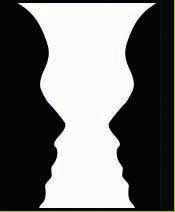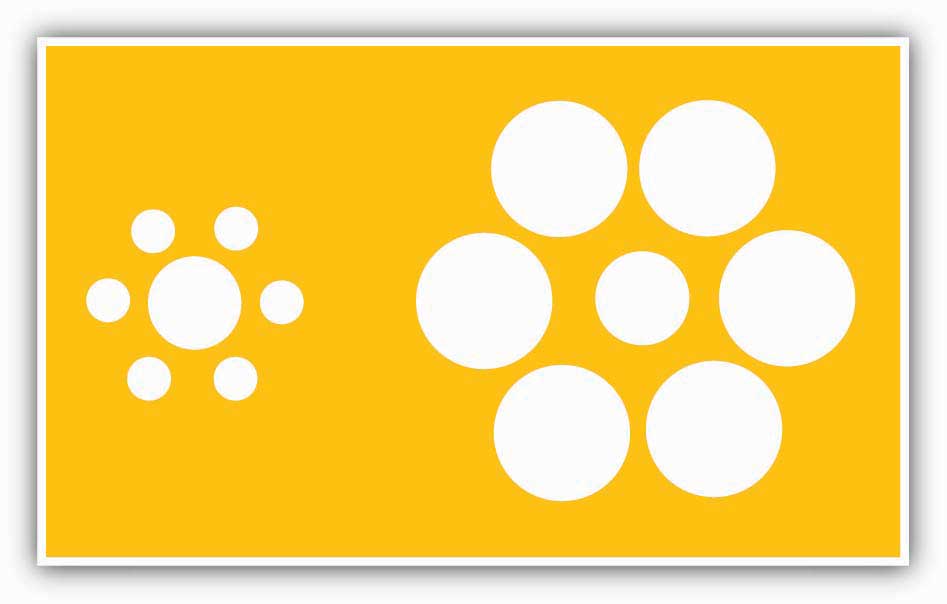2.4: Perception
- Page ID
- 4764
Learning Objectives
- Understand the influence of biases in the process of perception.
- Describe how we perceive visual objects and how these tendencies may affect our behavior.
- Describe the biases of self-perception.
- Describe the biases inherent in our perceptions of other people.
Our behavior is not only a function of our personality and values but also of the situation. We interpret our environment, formulate responses, and act accordingly. Perception may be defined as the process by which individuals detect and interpret environmental stimuli. What makes human perception so interesting is that we do not solely respond to the stimuli in our environment. We go beyond the information that is present in our environment, pay selective attention to some aspects of the environment, and ignore other elements that may be immediately apparent to other people.
Our perception of the environment is not entirely rational. For example, have you ever noticed that while glancing at a newspaper or a news Web site, information that is especially interesting or important to you jumps out of the page and catches your eye? If you are a sports fan, while scrolling down the pages, you may immediately see a news item describing the latest success of your team. If you are the mother of a picky eater, an advice column on toddler feeding may be the first thing you see when looking at the page. If you were recently turned down for a loan, an item of financial news may jump out at you. Therefore, what we see in the environment is a function of what we value, our needs, our fears, and our emotions(Higgins & Bargh, 1987; Keltner, et. al., 1993). In fact, what we see in the environment may be objectively flat out wrong because of such mental tendencies. For example, one experiment showed that when people who were afraid of spiders were shown spiders, they inaccurately thought that the spider was moving toward them (Riskind, et. al., 1995).
In this section, we will describe some common perceptual tendencies we engage in when perceiving objects or other people and the consequences of such perceptions. Our coverage of these perceptual biases is not exhaustive—there are many other biases and tendencies that can be found in the way people perceive stimuli.
Visual Perception
Figure 2.10

What do you see?
Our visual perception definitely goes beyond the physical information available to us; this phenomenon is commonly referred to as “optical illusions.” Artists and designers of everything from apparel to cars to home interiors make use of optical illusions to enhance the look of the product. Managers rely on their visual perception to form their opinions about people and objects around them and to make sense of data presented in graphical form. Therefore, understanding how our visual perception may be biased is important.
First, we extrapolate from the information available to us. Take a look at the first figure. The white triangle you see in the middle is not really there, but we extrapolate from the information available to us and see it there. Similarly, when we look at objects that are partially blocked, we see the whole (Kellman & Shipley, 1991).
Figure 2.11

What do you see?
Bryan Derksen – Cup or faces paradox – CC BY-SA 3.0.
Now, look at the next figure. What do you see? Most people look at this figure and see two faces or a goblet, depending on which color—black or white—they focus upon. Our visual perception is often biased because we do not perceive objects in isolation. The contrast between our focus of attention and the remainder of the environment may make an object appear bigger or smaller.
This principle is shown here in the third figure. At first glance, the circle on the left may appear bigger, but they are the same size. This is due to the visual comparison of the middle circle on the left with its surrounding circles, whereas the middle circle on the right is compared with the bigger circles surrounding it.
How do these tendencies influence behavior in organizations? The fact that our visual perception is faulty means that managers should not always take what they see at face value. Let’s say that you do not like one of your peers and you think that you saw this person surfing the Web during work hours. Are you absolutely sure, or are you simply filling the gaps? Have you really seen this person surf unrelated Web sites, or is it possible that the person was searching for work-related purposes? The tendency to fill in the gaps also causes our memory to be faulty. Imagine that you have been at a meeting where several people made comments that you did not agree with. After the meeting, you may attribute most of these comments to people you did not like. In other words, you may twist the reality to make your memories more consistent with your opinions of people.
The tendency to compare and contrast objects and people to each other also causes problems. For example, if you are a manager who has been given an office much smaller than the other offices on the floor, you may feel that your workspace is crowded and uncomfortable. If the same office is surrounded by smaller offices, you may actually feel that your office is comfortable and roomy. In short, our biased visual perception may lead to the wrong inferences about the people and objects around us.
Figure 2.12

Which of the circles in the middle is bigger?


